-
Car Reviews
- All reviews
- Midsize SUVs
- Small cars
- Utes
- Small SUVs
- Large SUVs
- Large cars
- Sports SUVs
- Sports cars
- Vans
Latest reviews
- Car News
-
Car Comparisons
Latest comparisons
- Chasing Deals
Mazda’s debut luxury SUV, the five-seat CX-60, flexes a pair of superb six-cylinder engines and hybrid nous – but poor ride quality is a rare miss for the brand
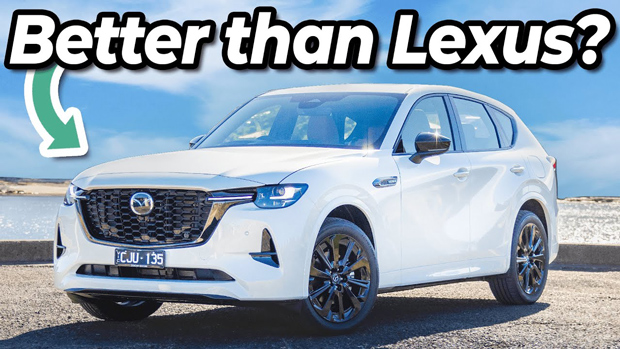
Mazda surprised many when it confirmed in 2020 that it would invest in a new longitudinal, rear-biased platform supporting standard six-cylinder engines – at a time when most other manufacturers sensed danger from electric competitors and regulators alike.
Mazda will go EV later this decade: for now, it’s leaning into a quaint swan-song for traditional premium motoring.
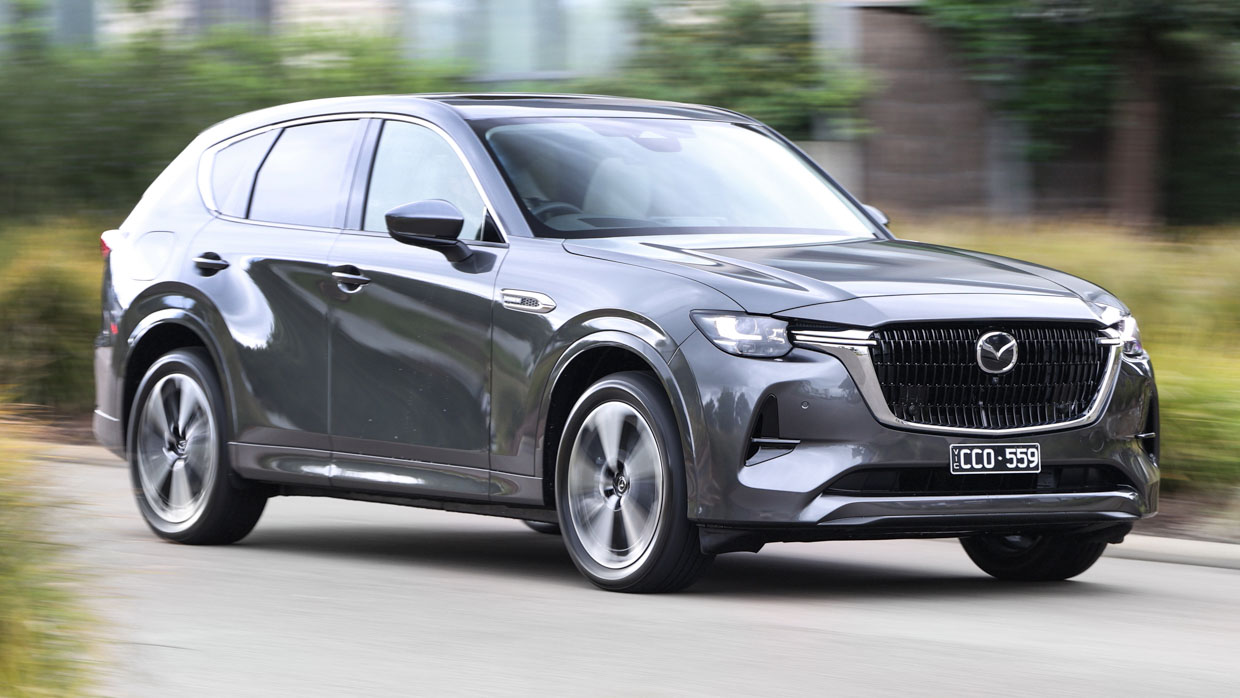
In Australia, Mazda’s premium expansion will encompass three SUV models initially: the two-row CX-60 that launches this month, a large three-row CX-90 that lands in August, and a slightly narrower three-row CX-80 that won’t be unveiled until later in 2023 before a local launch next year.
The CX-70 will exist in America but won’t come here.
All are more similar than they are different. Mazda is less than one-tenth the size of Volkswagen.
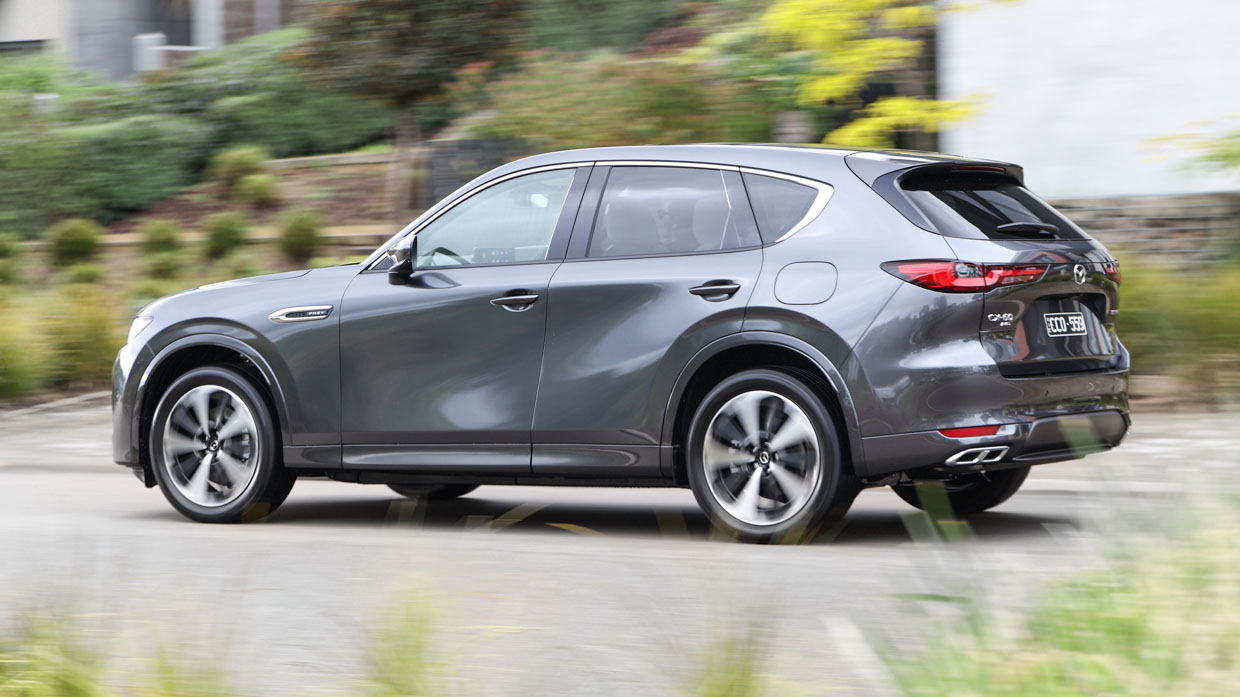
While the Japanese marque often punches above its weight in product sophistication, there isn’t the cash to splash on vast chasms between the new SUV models, which are designed to suit slightly different niches rather than disparate audiences.
So the CX-60 is the forerunner of a quartet that bucks downsizing and battery-electrification trends by running with a new, standard-fit, inline-six cylinder turbo petrol engine.
There’s also an optional inline-six diesel the Mazda engineers are particularly proud of. One concession to the times is a four-cylinder plug-in hybrid, rated to 62km of range (WLTP).
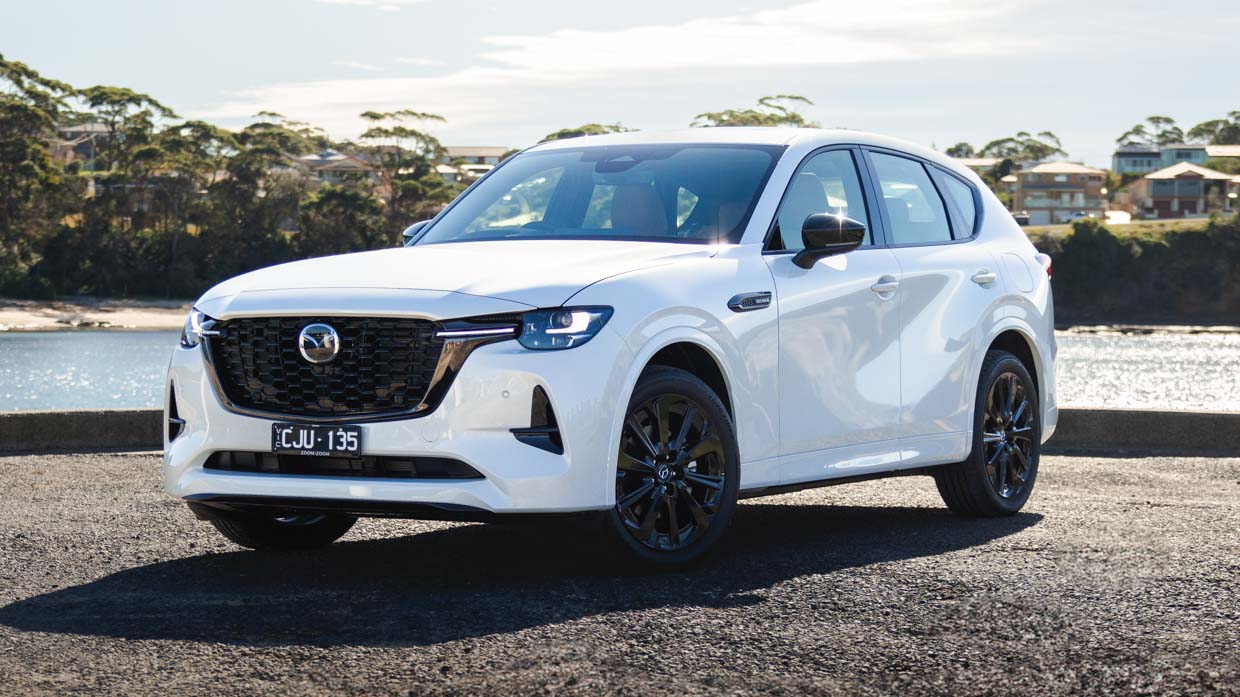
Starting at $59,800 before on-road costs for a six-cylinder Evolve entry model with manually-adjustable seats and moving through nine grades to the $85,500 Azami with the plug-in hybrid engine, the CX-60 range is implicitly – but not explicitly – aimed at the Lexus NX and Volvo XC60.
It is more affordable than both, not to mention the BMW X3 and Mercedes-Benz GLC.
Mazda Australia insists that in expanding to a premium tier in its new SUV models, it is not abandoning mainstream price points.
Time will tell – the cheaper CX-9 seven-seater has been discontinued – but the latest move seems consistent with Mazda’s very slow and gradual ascent in terms of perceived quality.
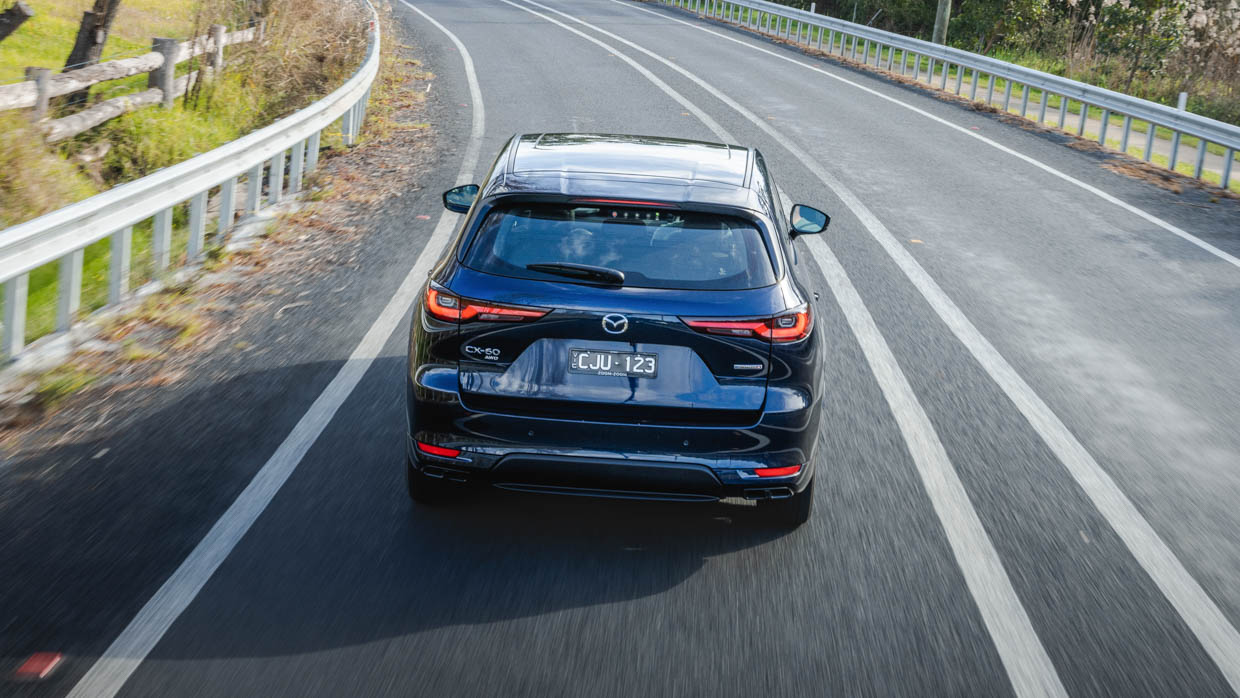
The signs were there from late 2018, when the fourth-generation Mazda 3 was revealed with an ambitious uplift in perceived interior quality, with posh materials and upmarket styling.
The CX-30 continued the theme. Meanwhile, Mazda elevated many existing models to higher status with dramatic interior material upgrades.
But the pair of small Mazdas curiously abandoned previously-standard independent rear suspensions for cheaper torsion beams beneath the skin.
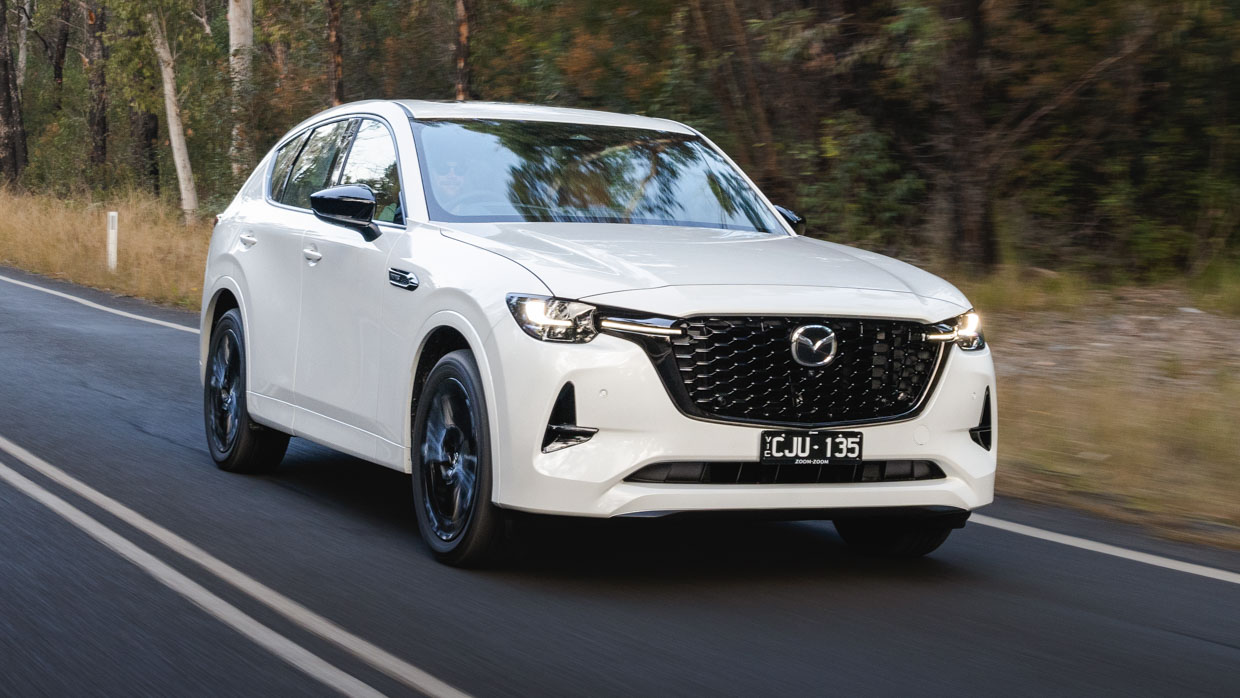
In some ways, that was a surprising move, highlighting that Mazda’s attention on driving dynamics was facing pressure from competing priorities addressing buyer demands for premium presentation.
Increasing buyer expectations haven’t waned – and Mazda executives are keen to capture existing CX-5 buyers before they depart the brand for a more premium alternative – hence the bolder step to upmarket territory with the CX-60.
All models feel expensive inside, thanks to strong perceived quality and plush cabin fixtures.
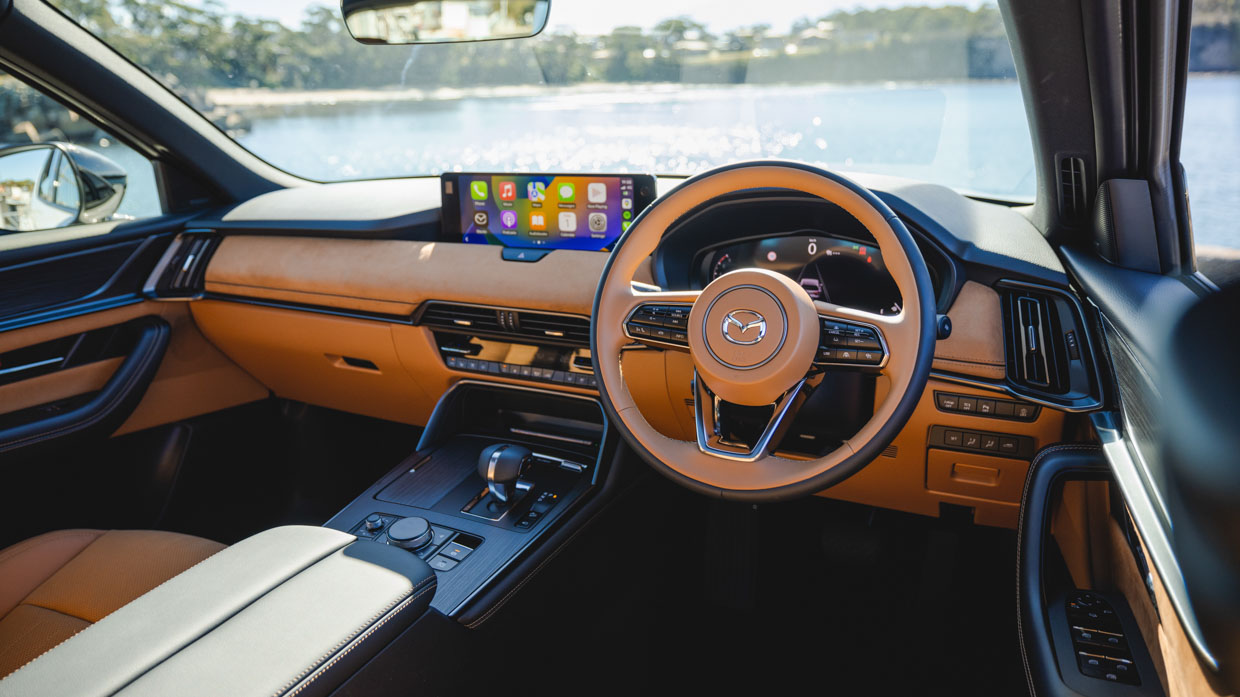
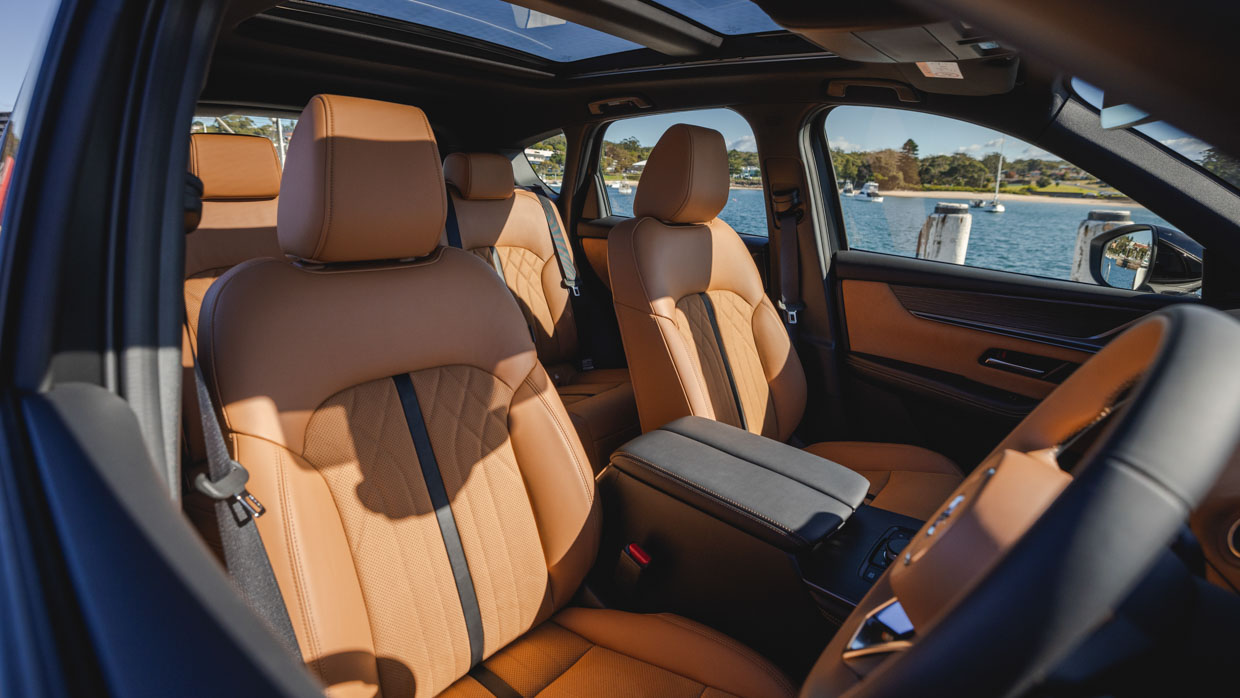
The entry-level Evolve (from $59,800) has vinyl upholstery and manual seats – but these can be replaced by a luxury package that swaps to heated leather seats with power adjustment.
From there, the GT (from $67,800) goes to 20-inch wheels, and includes hide upholstery as standard. It also gains a panoramic sunroof, Bose stereo, and more extensive painted cladding outside.
The Azami (from $73,000) upgrades further to nappa leather, with cooled front seats and a driver personalisation system – plus the choice of two more premium themes for $2000 apiece in the textural Takumi package or sportier SP theme.
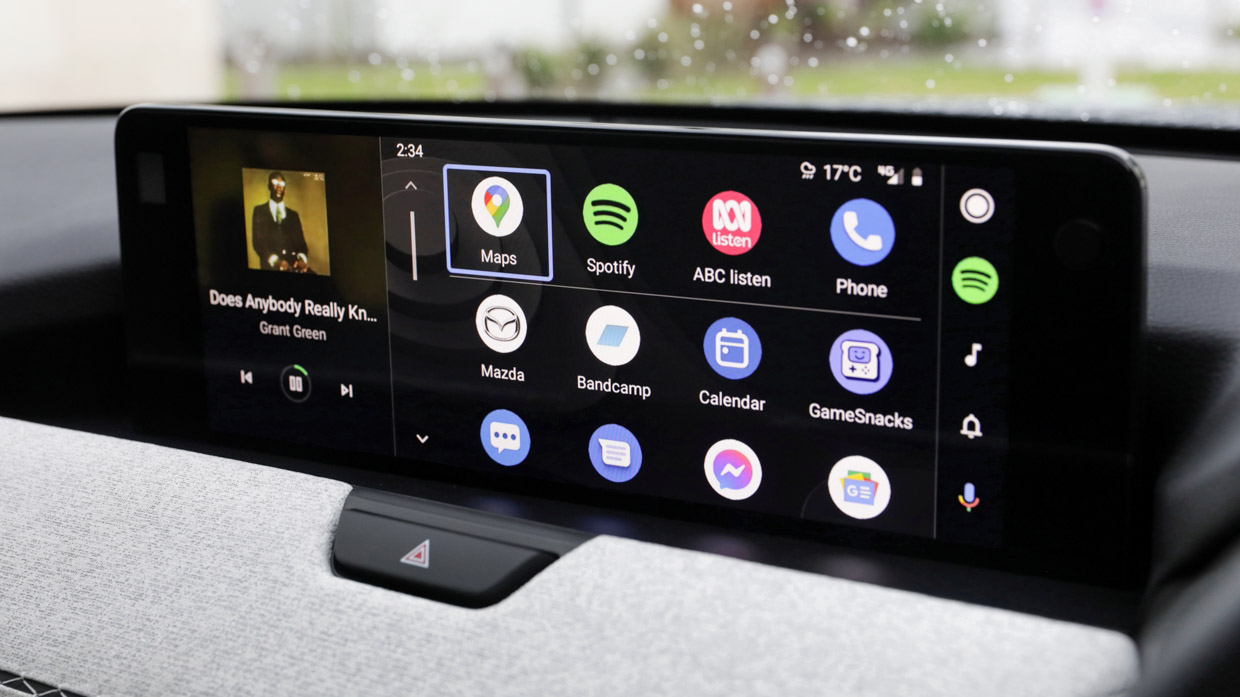
We spent all of our time in an Evolve with luxury package, and an Azami SP. Seat comfort was a strong point for both variants, and cabin ergonomics are a high note. Physical climate controls remain and buttons and switches are all pleasantly damped.
Crisp graphics are rendered on twin 12.3-inch screens with wireless Apple CarPlay and Android Auto, though touchscreen functionality works only with those apps, and only while stopped. The rest of the time an intuitive control dial is used.
Back seat space is middling for the class but comfortable enough, though the lack of rear seat heating – or a customisable climate zone – is a surprise in this segment now. A power tailgate reveals a modest 477 litres of boot space.
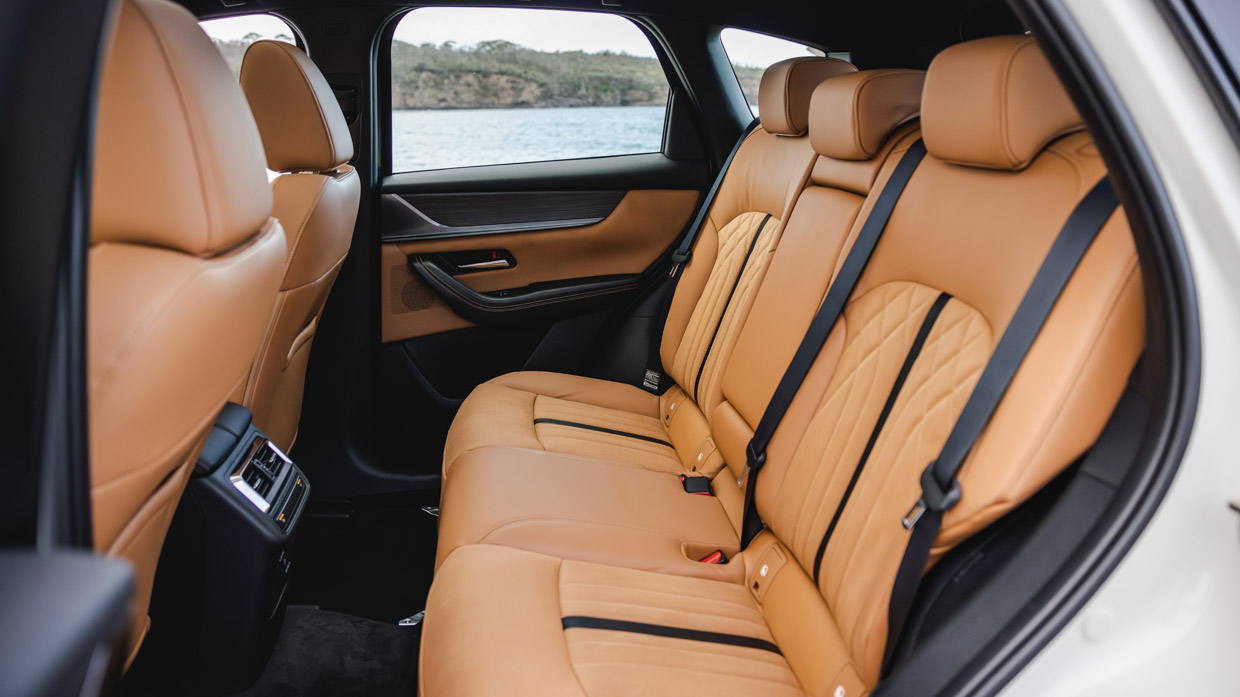
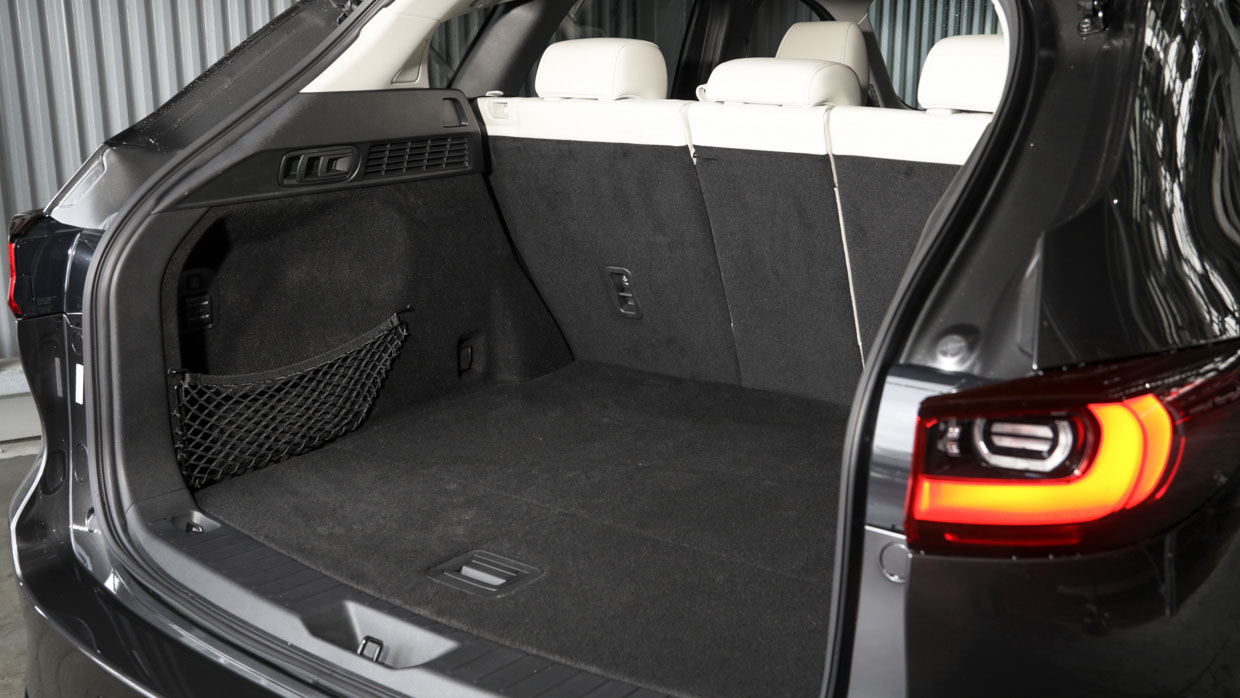
Mazdas of the early 2010s were praised for fun-to-drive dynamics – and criticised for poor ride quality and prominent road noise. But the lean Japanese marque listened and corrected those refinement woes with steady, gradual improvement.
But with the launch of its first, much-anticipated luxury SUV product, old habits might be creeping back in.
The CX-60 is an extremely presentable premium SUV, especially inside, where maturity of design and ergonomic sensibility blend with rich materials, especially in the Azami model (from $75,000), which can be optioned with warm Japanese textile trim with the Takumi package, or a lush, sporty tan leather and Alcantara SP package treatment.
And standard six-cylinder engines? In this segment? That’s very pleasant indeed. With the exception of the Volkswagen Touareg (from $89,240), most other premium midsize and large SUVs force harder-working four-cylinder engines on buyers at this price – if they even offer a six-cylinder option at all.
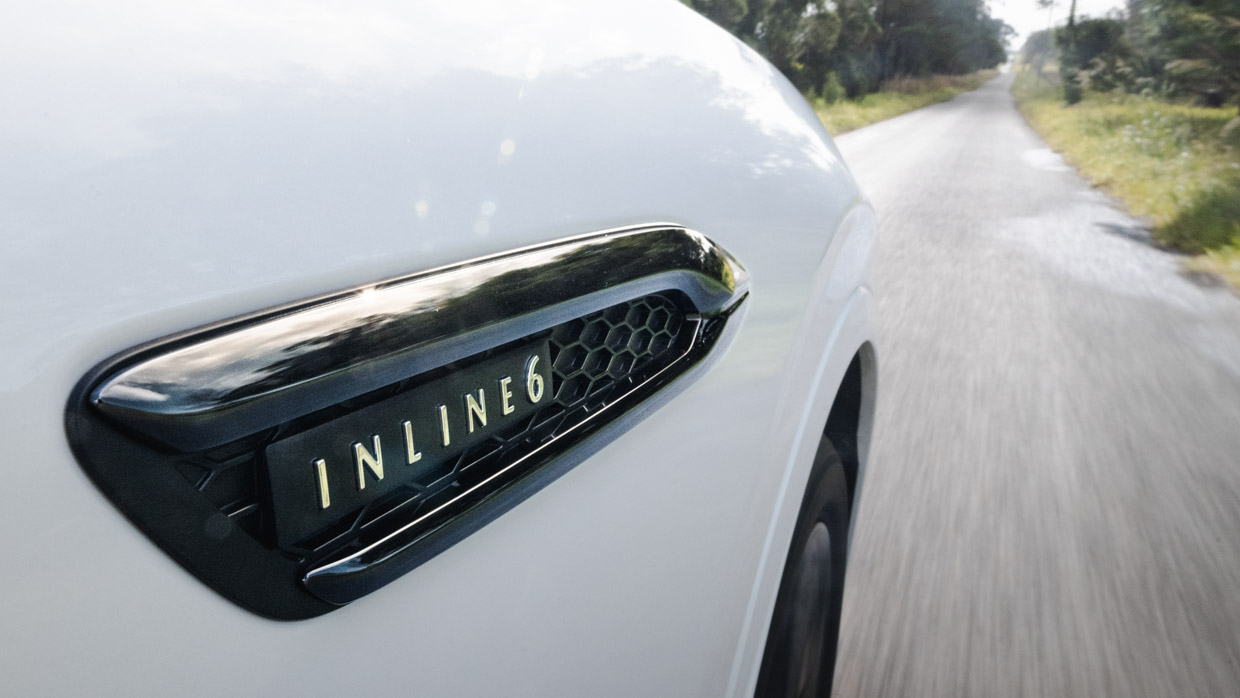
And the two six-cylinder engines on offer are impressive units. Both are new, and both include 48-volt mild-hybrid technology as standard, allowing the engines to switch off entirely while coasting.
They also fill in a small amount of power and torque during turbo spool-up, increasing smoothness.
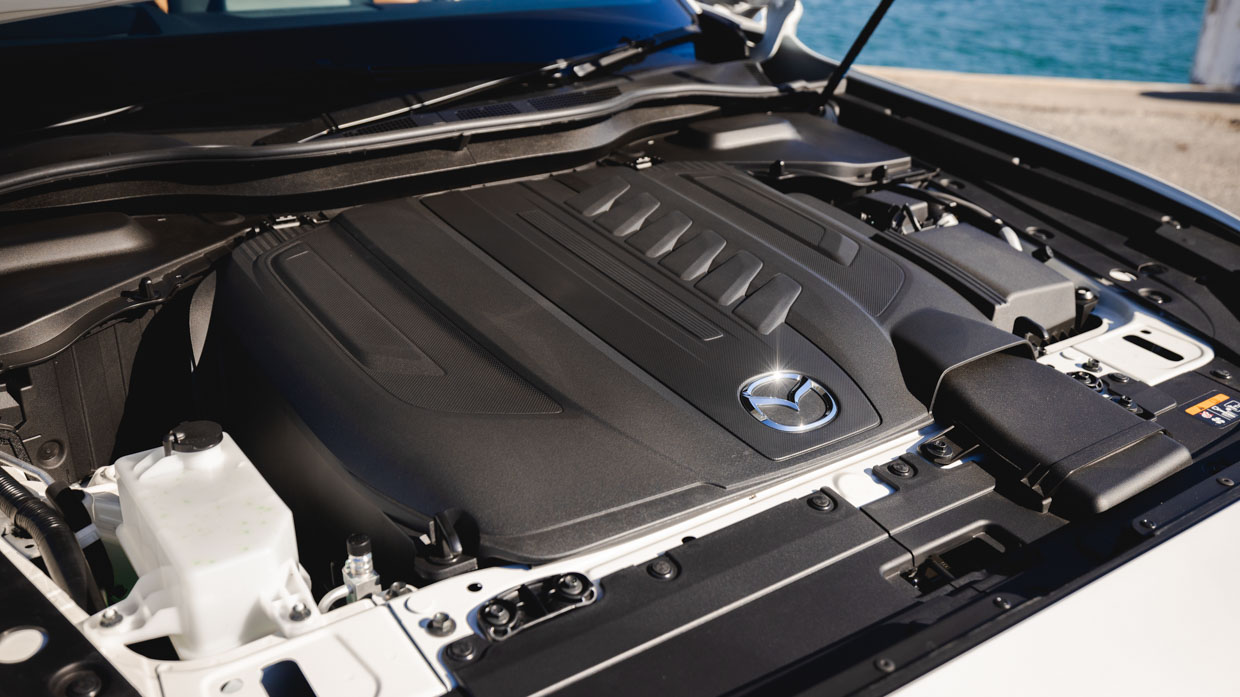
Both measuring 3.3-litres in capacity, with all-wheel drive (AWD), Australian CX-60s can opt for petrol or diesel power. Less powerful rear-wheel-drive variants exist elsewhere but they are not coming here.
The G40e petrol produces 209kW/450Nm with claimed consumption of 7.3L/100km, while the D50e diesel makes 187kW/550Nm yet is rated to return 4.9L/100km. Both feel muscular and generous, especially if you’re accustomed to the feeling of a turbo four in a larger SUV.
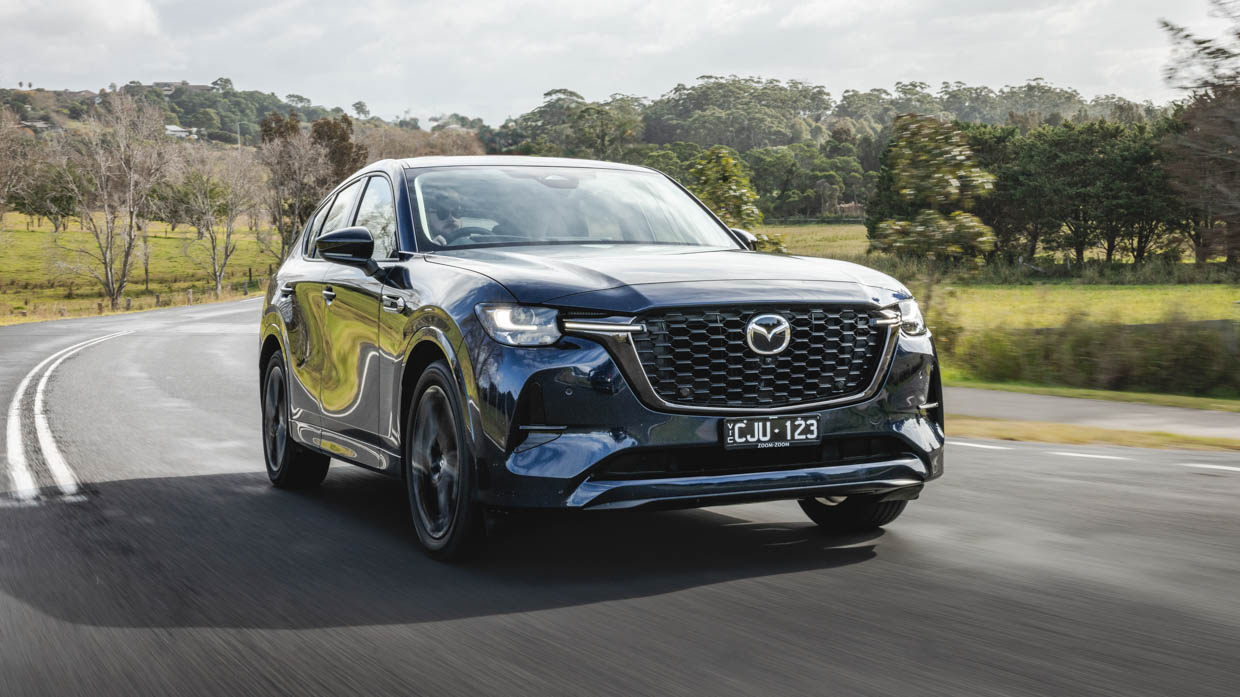
Mazda is running a bold campaign calling the CX-60 range “all-hybrid”. That’s technically true of the sixes, but it is mostly in aid of the optional 2.5-litre four-cylinder petrol plug-in hybrid, which produces an attention-grabbing 241kW/500Nm working in tandem.
Or you can select EV mode for 62km of range (WLTP), which seemed achievable in our brief test.
As the sole four-cylinder, the plug-in hybrid model will mostly be attractive to Australians purchasing a CX-60 under a leasing arrangement, because PHEVs priced beneath the luxury car tax threshold qualify for zero fringe benefits tax until mid-2025 – a significant saving.
Like the six-cylinder engines, the PHEV sends power to the AWD system via an eight-speed automatic gearbox with a clutch used in place of a torque converter.
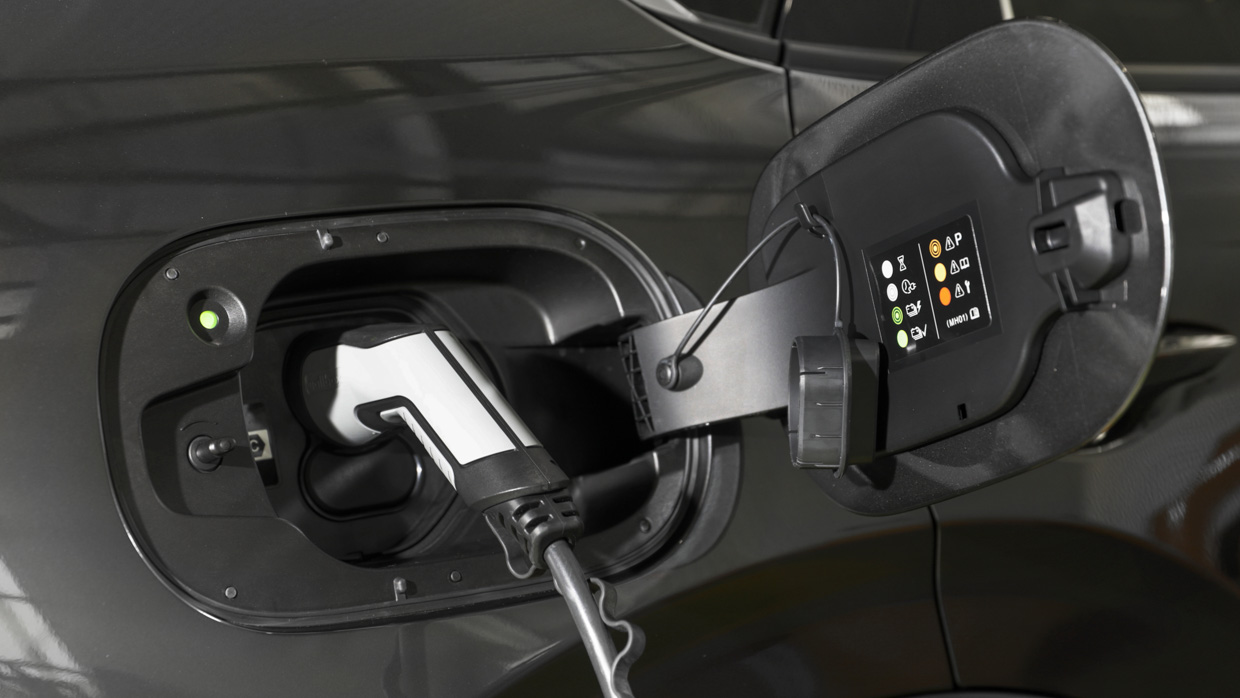
It’s a novel setup, and reasonably smooth if you’re linear with the throttle, though its advantages over a tried-and-tested ‘auto’ were not immediately clear.
While the PHEV model will allow some families to get into a CX-60 more cheaply than they otherwise might have, the six-cylinders are considerably more appealing to drive, avoiding the plug-in hybrid’s relatively clunky petrol-electric changeover refinement. Plus, the PHEV’s weight afflicts body control, as we shall discover.
By contrast, the sixes feel much more than adequate. With the 3.3-litre petrol, Mazda aimed to best the refinement of 3.5-litre V6 engines on the market.
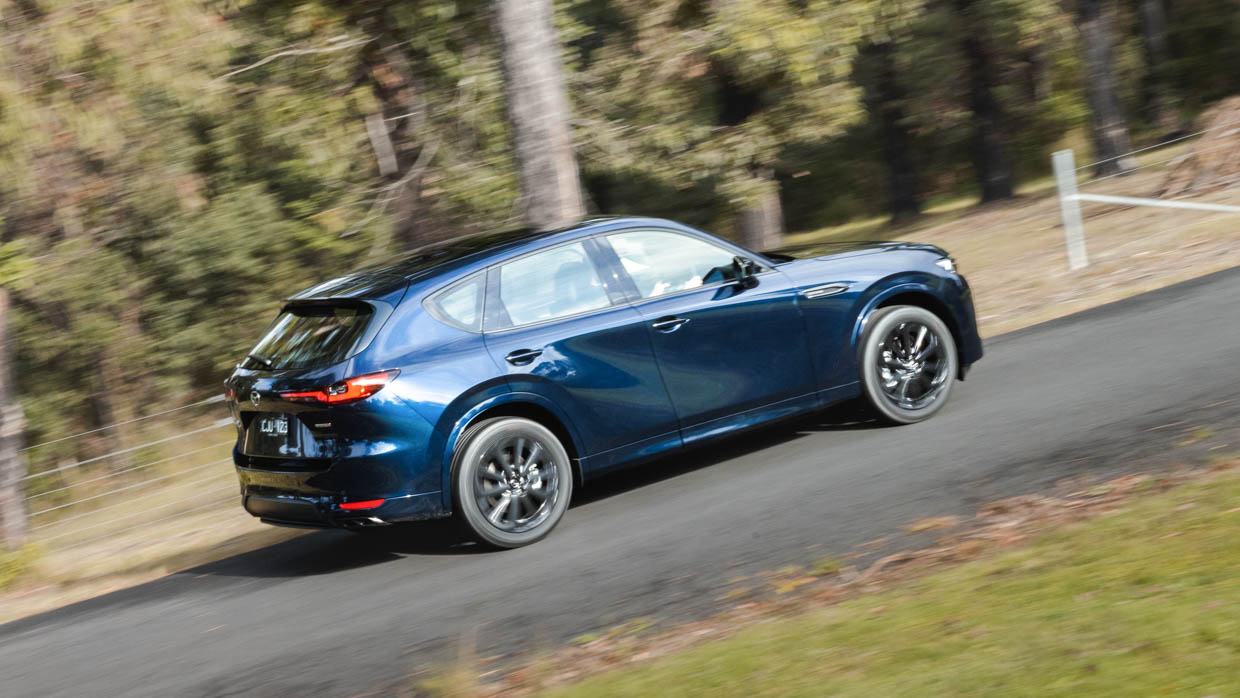
They succeeded: it’s distant-sounding but powerful and slick. The diesel is immediately louder, like an Audi SQ5, but its relentless wave of mid-range torque was addictive. And it’s very frugal.
Find a very smooth road, and the CX-60’s handling can also enchant. It’s sporty, compelling and brand-appropriate, with a relatively slow steering ratio reminiscent of the marque’s sports cars.
Mazda has once again hit a good mix of turn-in zeal, thanks to selection of lightweight engine parts, and body control that incorporates a bit of roll to release some pressure on the chassis and occupants. Sadly, it only really comes together when the tarmac is, as we mentioned, smooth…
Despite its styling and powertrain sophistication, the CX-60 stumbles at a hurdle we thought Mazda had cleared years ago: ride quality that feels unpolished – unfinished even – and this factor lets down a package that impresses in so many other ways.
Australia is like that. Our urban and country roads quickly expose improper ride.
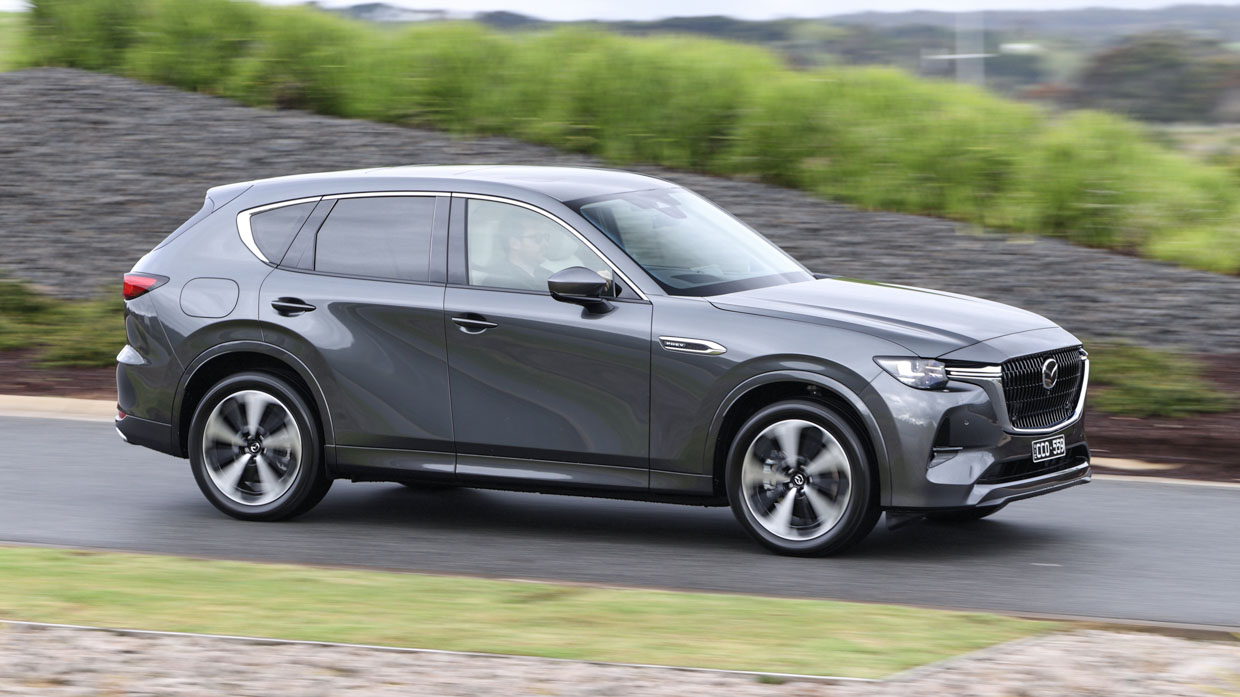
Mazda radically improved the ride quality of its previous, third-generation Mazda 3 small car during its years on the market, and the CX-9 remains a supple, comfortable vehicle on Australian roads, even with 20-inch wheels.
We know that Mazda’s engineering team can do it. And its new premium platform should have avoided this problem.
But there have been some ride quality red flags in the car’s gestation: our drive of a late-stage prototype CX-60 plug-in hybrid in Europe last year saw us remark on its firm ride, and reputable European road-testers have pointed out flaws with the CX-60’s suspension in recent months. It is clear that the issue needs to be examined.
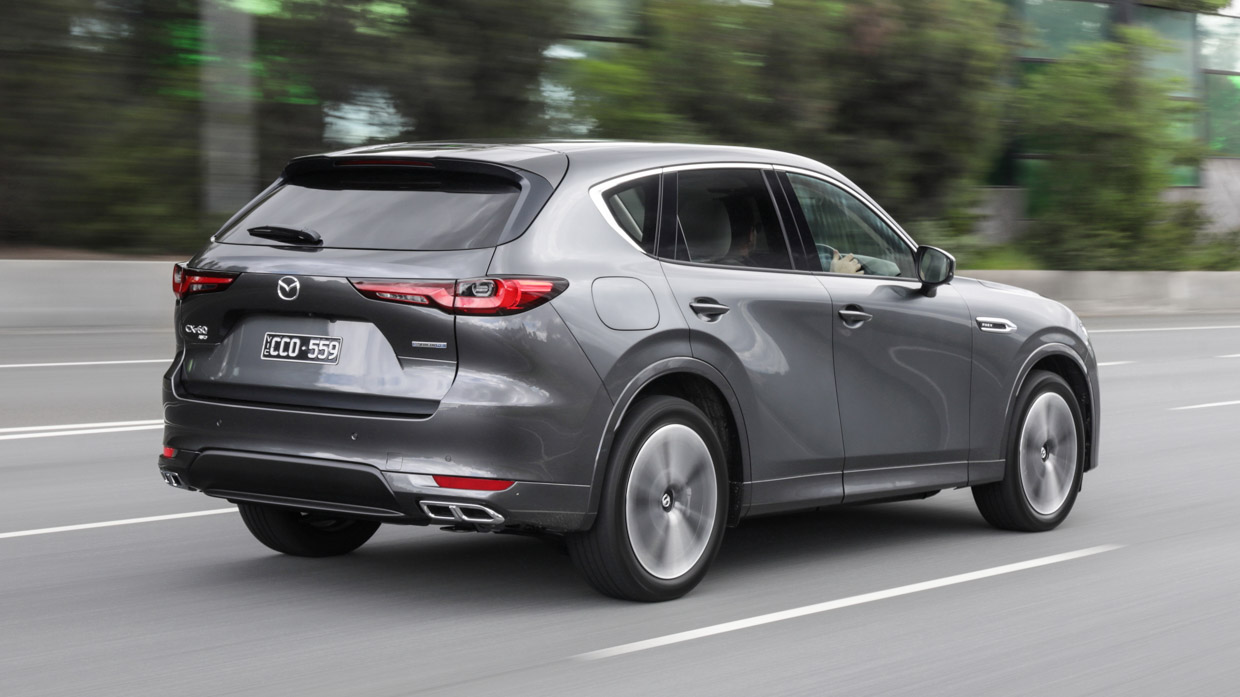
What’s gone wrong with the ride? Despite packing expensive double-wishbone front suspension and an independent rear, the suspension tune has landed on an unfortunate blend of excessive stiffness on the front axle and overdamping at the rear end.
Neither end rides well in isolation and they work poorly together, with expansion joints and some mid-corner bumps clanging into the cabin off the stiff, non-compliant front end before the rear end noticeably bucks. There’s no optioning your way out of it: adaptive dampers or air suspension aren’t on the menu.
The only cheat code is to specify the CX-60 in Evolve trim, which keeps the same basic suspension but downsizes the wheel size to 18 inches and swaps to a much higher-profile tyre. The additional rubber in the tyre provides additional ‘passive’ damping for the occupants that is missed with the lower-profile 20s.
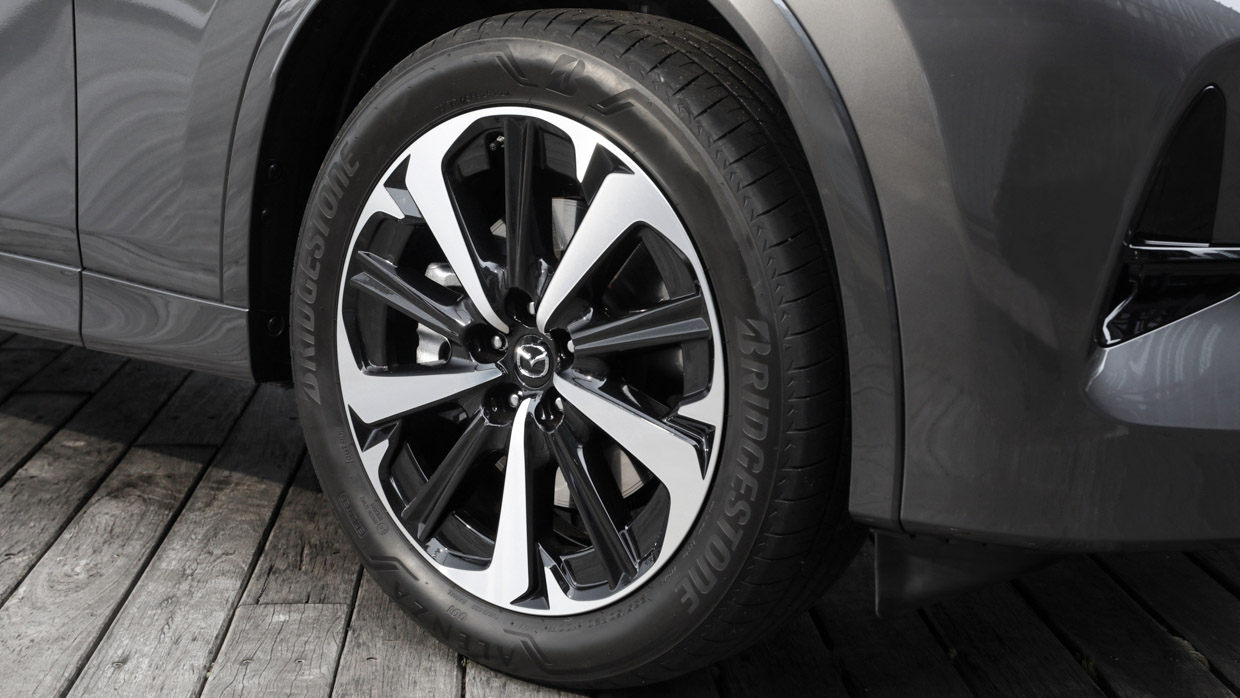
Poor ride quality is an oddly common trait of the upper-midsize luxury SUV class: the X3 and XC60 both benefit from buyers ticking their available suspension upgrades to increase compliance, but in a reversal of our opinion from a road test in Europe, the CX-60 on 20s has worse ride quality either of those rivals in their standard forms on Australian roads.
The ride deserves to be fixed, because Mazda should care about getting the holistic experience right on a platform that has undoubtedly been extremely expensive to bring to market – and one which could be a darling of automotive enthusiasts, and a pleasant swan-song for big, traditional premium motoring in the 2020s.
There are a couple of quirks to the CX-60’s ownership proposition. The diesel seems to make a lot of sense – its strength on the road and low fuel consumption look great.
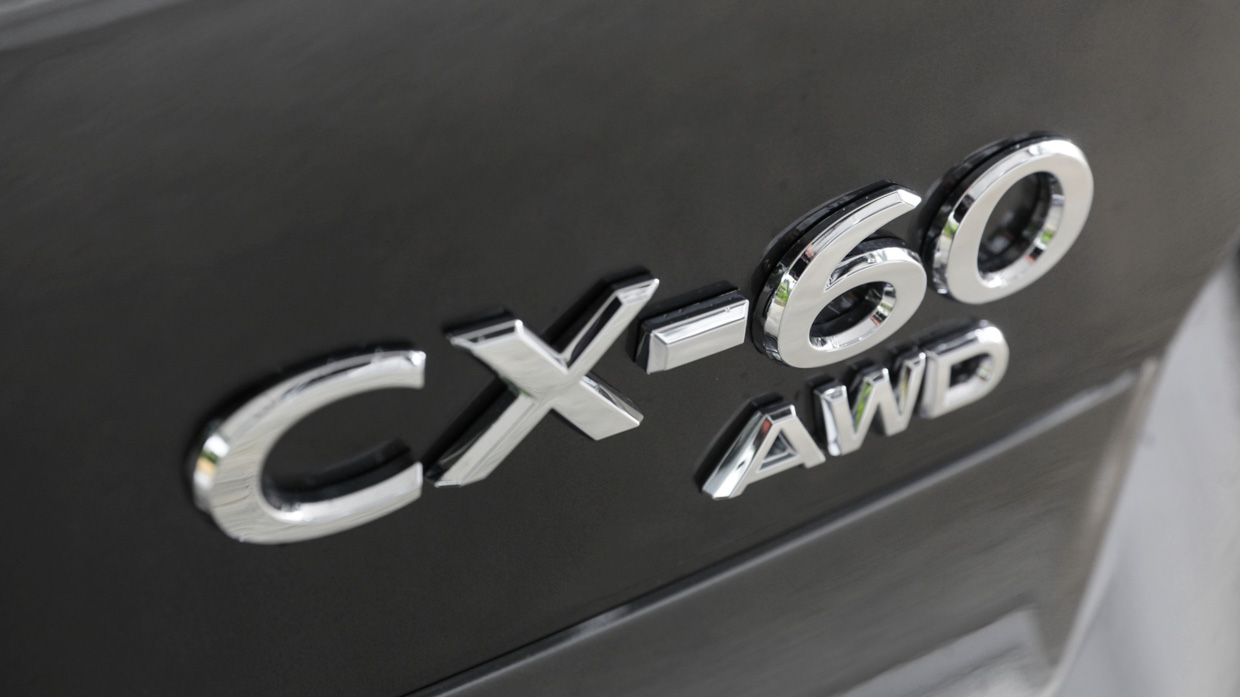
But its 2000kg towing rating is 500kg less than the petrol or even the plug-in hybrid (2500kg). We understand it’s about cooling, and Mazda’s durability decisions are usually conservative.
A slight further annoyance about the otherwise-likeable diesel is that its service intervals are every 10,000km – rivals offer 15,000km, even 25,000km in the case of a diesel Mercedes-Benz GLE-Class. And servicing is pricey too, at least for the six-cylinders, but at least the petrol can drive 75,000km across five years of maintenance:
| Maintenance length | Service pricing | |
| G40e petrol six | 5 years / 75,000km | $3360 |
| D50e diesel six | 5 years / 50,000km | $3217 |
| P50e plug-in hybrid | 5 years / 75,000km | $2590 |
A five-year warranty with unlimited kilometres applies to the CX-60, a separate eight-year, 160,000km is applied to the high voltage components of the PHEV’s powertrain.
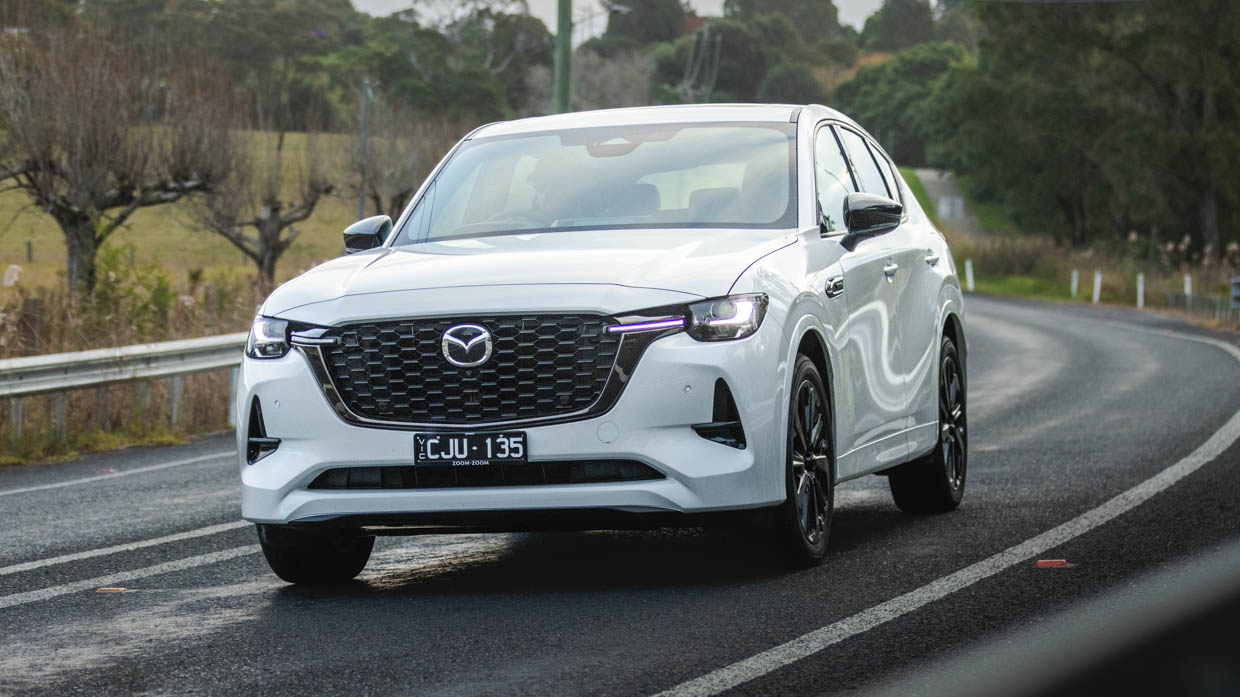
No matter how we feel about its ride quality, the CX-60 is a watershed moment for Mazda in Australia – so we have also taken on a CX-60 Azami SP as a long-term vehicle in the Chasing Cars garage.
We look forward to sharing how the vehicle performs with us for a longer stay – including whether the suspension beds in, or whether we mellow to its character over the next several months and thousands of kilometres.
Key specs (as tested)
About Chasing cars
Chasing Cars reviews are 100% independent.
Because we are powered by Budget Direct Insurance, we don’t receive advertising or sales revenue from car manufacturers.
We’re truly independent – giving you Australia’s best car reviews.
The estimate provided does not take into account your personal circumstances but is intended to give a general indication of the cost of insurance, in order to obtain a complete quote, please visit www.budgetdirect.com.au. Estimate includes 15%^ online discount.
^Conditions Apply
Budget Direct Insurance arranged by Auto & General Services Pty Ltd ACN 003 617 909(AGS) AFSL 241 411, for and on behalf of the insurer, Auto & General Insurance Company Limited(ABN 42 111 586 353, AFSL 285 571).Because we don’t know your financial needs, we can’t advise you if this insurance will suit you. You should consider your needs and the Product Disclosure Statement before making a decision to buy insurance. Terms and conditions apply.
Indicative quote based on assumptions including postcode , 40 year old male with no offences, licence suspensions or claims in the last 5 years, a NCD Rating 1 and no younger drivers listed. White car, driven up to 10,000kms a year, unfinanced, with no modifications, factory options and/or non-standard accessories, private use only and garaged at night.
^Online Discounts Terms & Conditions
1. Discounts apply to the premium paid for a new Budget Direct Gold Comprehensive Car Insurance, Third Party Property Only or Third Party Property, Fire & Theft Insurance policy initiated online on or after 29 March 2017. Discounts do not apply to optional Roadside Assistance.
2. Discounts do not apply to any renewal offer of insurance.
3. Discounts only apply to the insurance portion of the premium. Discounts are applied before government charges, taxes, levies and fees, including instalment processing fees (as applicable). The full extent of discounts may therefore be impacted.
4. We reserve the right to change the offer without notice.